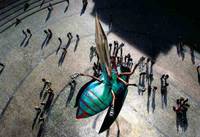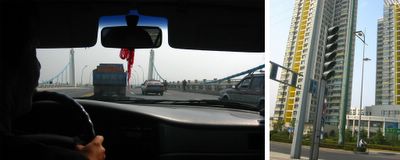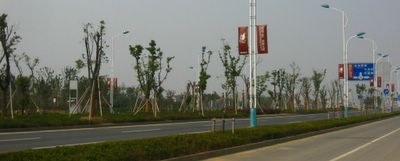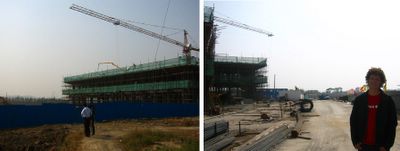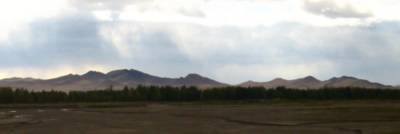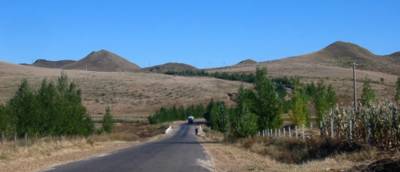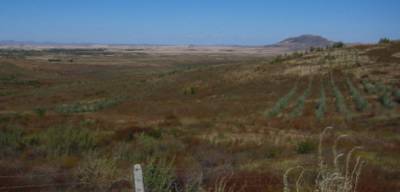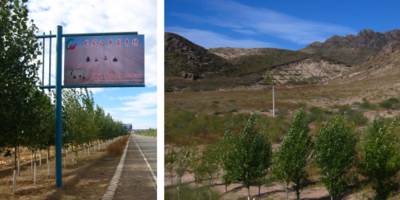
dear all
this chronofile is off limits in china – bounced back by the firewall of the chinese government (the great wall AD 2004). long time no hear... but with a head full of stories and a camera full of images, I hope we can catch up soon.
it’s been a long trip. and really far away. tokyo looks different, the japanese look and sound different... an essential china chapter to the asian experience... little did I know. hard to catch in a single paragraph (feel the hidden disclaimer).
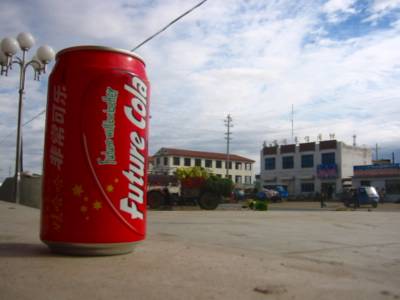
a long trip, huge contrasts - a powerful mix of urban and rural china.
first two weeks on a bike through inner mongolia, desert radar on. expansive grassy adventures, days feeling like weeks, further away than I had ever been, as lonely as the planet gets I guess… slowly sliding through fragile highlands, sometimes stunningly beautiful, sometimes hardly surviving under the weight of organized overpopulation.
once back in beijing, just time enough to wash the dust out of my dreads and get dressed for a business trip to shanghai, a glamorous destination for a business trip, especially from under the wings of our chinese clients. fancy hotel rooms, buffet breakfasts, french chansons on rooftop bars, de krab met de gulden scharen, waterfront grandeur. even some tourism in jiangsu province, china’s città diffusa. interesting sino-japanese dynamics. topped off by a visit to the construction site in wuxi…
back to beijing for the last week, comfortable home base, capital of Earthly Tranquility. always a pleasure...
 from cabbage storage room to 'eyes wide shut' resort
from cabbage storage room to 'eyes wide shut' resort
some say china is making its great leap forward. that’s not really how I felt it. instead of leaping, I saw thousands of chinese steadily moving. transporting huge loads of stones, coal, sheep, silk, cellphones, oil, cabbage, coke, reinforced concrete - on their backs, donkey carts, blue trucks, trains, barges, planes. on and off, back and forth, day and night, it never stops…
china is not jumping from a rural society to a postindutrial market economy. all the in betweens considered logical by our history books – nomadic / agrarian / industrial / hi tech / informational / postfordian societies wha’ever – are developing too, at the same time, right next to each other. destruction and construction are sweeping through all these layers, through cities as well as through the countryside, at an incredible pace, at an unprecedented scale, apparently.
 simultaneous china - a shepherd herds his flock of sheep around wind energy turbines, high on the mongolian grasslands. the mound in the distance is a rarely visited section of the great wall, made of earth.
simultaneous china - a shepherd herds his flock of sheep around wind energy turbines, high on the mongolian grasslands. the mound in the distance is a rarely visited section of the great wall, made of earth.
and I mean apparently unprecedented.
however fast china is developing nowadays, this trip has shown me that nothing is really new under the chinese sun. only now I can see the past fifty plus years of communism as just one of china’s inward-looking, undemocratic dynasties (of foreign ideology), even a relatively short-lived one...
and the last decade as an accelerated dawn to times of open borders and unlimited opportunities, in which anachronic communist rhetorics and great firewalls are nothing but annoying side phenomena. it’s just a matter of time to see china become the world’s leading economy – again, anything but unprecendented...
all these lines are marked on the face of beijing. and on the faces of the old guys in the hutongs, beijing’s crooked greystone alleys. those faces have seen it all come and go, dynasty after revolution after uprising after decadence after dynasty… they squat on their doorsteps, with their birds and pipes, and smile. and spit. just like they’ve been doing for centuries.

pictures on a screen only give a vague idea of what it all really looks like – again, my powershot lense prooved too weak for close ups (exception below), and too narrow for highland horizons, for the masses in train stations. sure francis will tell me the pictures could have been taken anywhere… anyway, I’ll post some, au fur et à mesure, under the day of the action. hope you like.
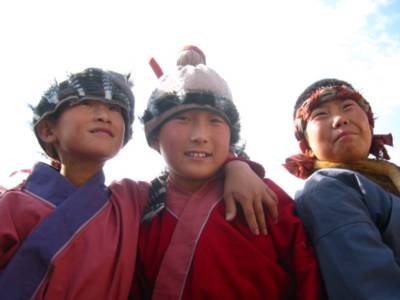
>>>
en voor wie (nog altijd) niet is overtuigd - stef kamil carlens in een interview naar aanleiding van zita swoons
nieuwe plaat…
“Soms ben ik te veel aan het werken. De voorbije twee jaar was het steeds maar componeren. Je moet ook nog leven. Ik voel dat ik nu grote ervaringen nodig heb, als zuurstof en als inspiratie. Ik zou graag eens rondreizen in Marokko. Of er helemaal alleen op uittrekken met de fiets en een tent. Ik fiets graag. Ik heb twee weken geleden de Mont Ventoux gedaan. Dat is pas een kick: die inspanning, de prachtige natuur, de rust en de goeie lucht.”
en de reste...






